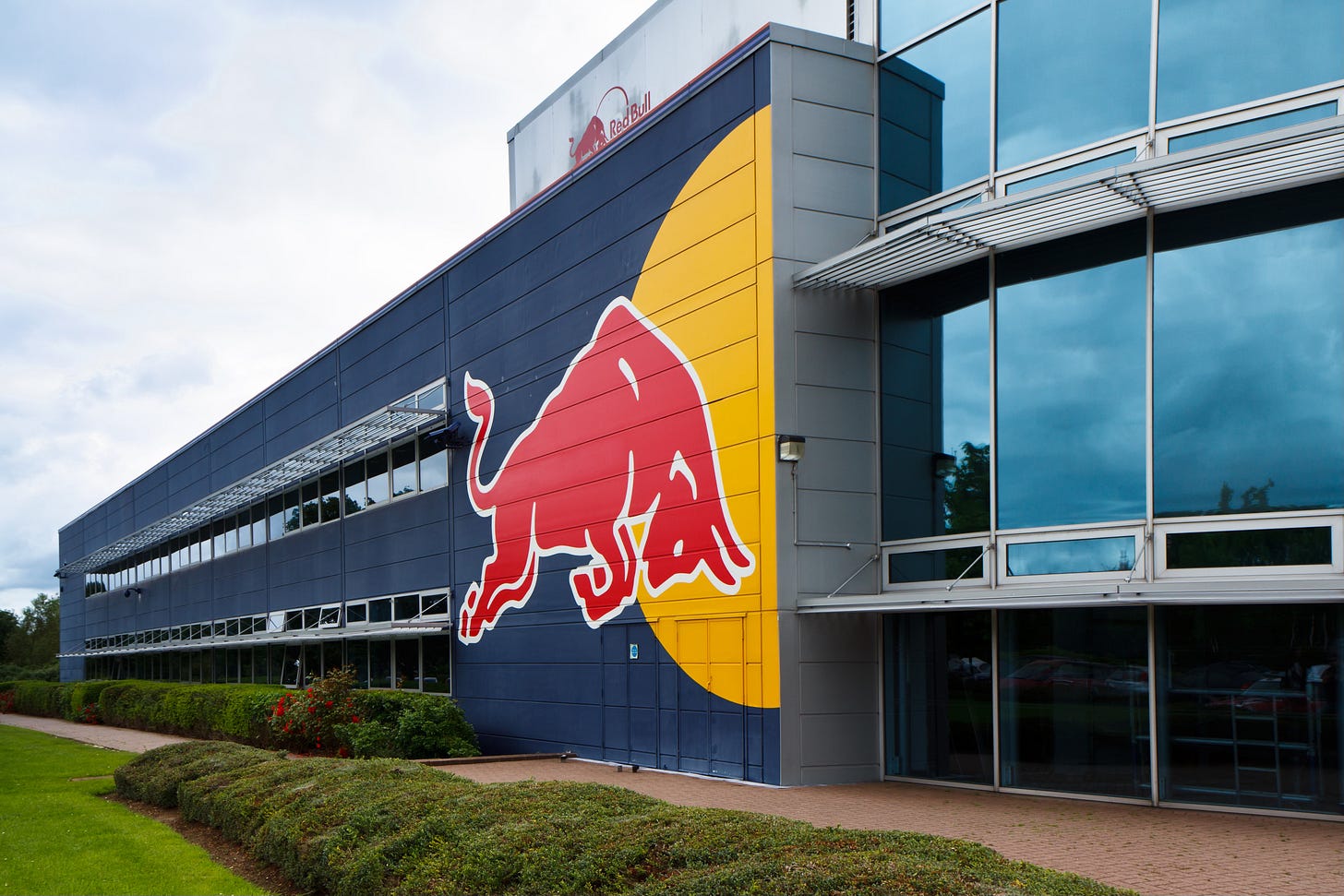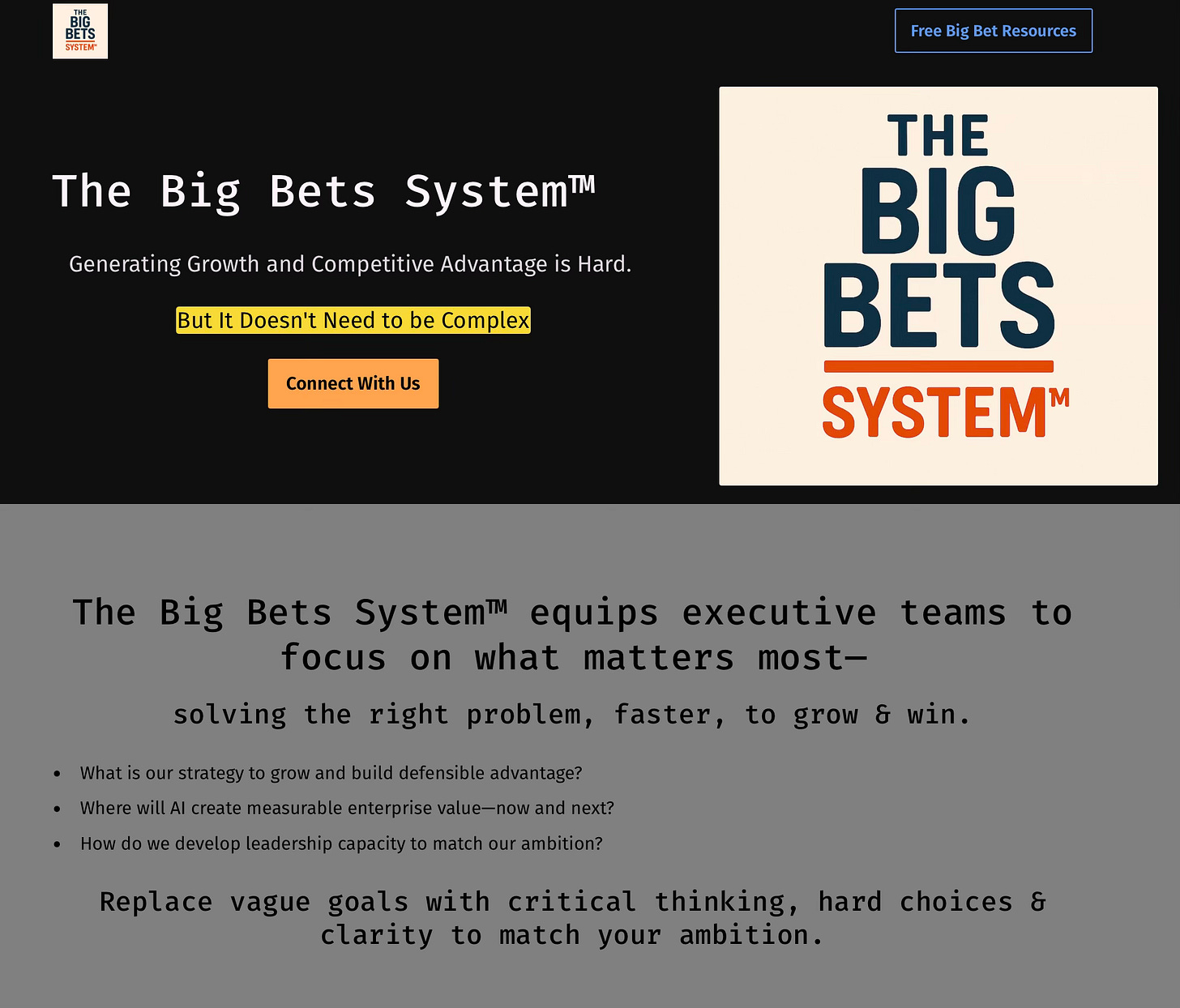Red Bull Racing, Day 1 & Big Bets
Like millions of others, my fascination with Formula 1 racing was ignited by Netflix's Drive to Survive. It's thrilling, addictive, and impossible to turn away from—just like the sport itself.
But beyond the adrenaline-pumping drama, there's a profound lesson at the heart of F1: relentless reinvention. In this fiercely competitive sport, finding even the tiniest advantage can mean the difference between triumphant victory or devastating defeat.
Or, as the legendary philosopher Ricky Bobby famously proclaimed in Talladega Nights:
"If you ain't first, you're last."
So how can adopting this mindset of constant evolution help us navigate our own races—whether in business, teams or our career?
Buckle up. We’ve got DRS activated for passing.
Red Bull Reinvention
The Red Bull F1 team has been the dominant team in F1 racing for the past few years. Conventional thinking would be “don’t fix it if it isn’t broken”.
Competitive advantage in business is short lived and getting shorter. That’s true in F1 racing as well. Red Bull doesn’t look to optimize the past investments, it looks to maintain the edge by starting over again during the off season.
“During the off-season, the critical question was the strategic direction Red Bull would take for the final year of the current regulations. Amid the diminishing returns of a drastic shift, would they opt for evolution or revolution?
Waché (the head of engineering) revealed that they decided to re-evaluate the entire car.
The team’s operating objective was to make the RB21 (the 2025 car) more user-friendly for the drivers and provide a more straightforward driving experience. Waché pointed out that the redefined car offers a broader range of setups, providing more setup freedom but also requiring more time to determine the best compromises for different tracks.
Waché dismissed the idea that Red Bull merely refined the approach used during the latter stages of the 2024 season. Instead, he emphasized that the team had re-conceptualized the car in a new direction, resulting in the RB21 being around 0.3 to 0.4 seconds faster per lap than the RB20 (the 2024 car).”1
Day 1
First being referenced in the 1997 Amazon shareholder letter, “Day 1” has been a longtime mantra for Bezos’ on the type of company he is building.
In the 2016 Amazon shareholder letter, Jeff expanded on this belief system.
“Jeff, what does Day 2 look like?”
That’s a question I just got at our most recent all-hands meeting. I’ve been reminding people that it’s Day 1 for a couple of decades. I work in an Amazon building named Day 1, and when I moved buildings, I took the name with me. I spend time thinking about this topic.
“Day 2 is stasis. Followed by irrelevance. Followed by excruciating, painful decline. Followed by death. And that is why it is always Day 1.”
To be sure, this kind of decline would happen in extreme slow motion. An established company might harvest Day 2 for decades, but the final result would still come.
I’m interested in the question, how do you fend off Day 2? What are the techniques and tactics? How do you keep the vitality of Day 1, even inside a large organization?
Such a question can’t have a simple answer. There will be many elements, multiple paths, and many traps. I don’t know the whole answer, but I may know bits of it. Here’s a starter pack of essentials for Day 1 defense: customer obsession, a skeptical view of proxies, the eager adoption of external trends, and high-velocity decision making.2
Amazon emphasizes high-velocity decision-making, recognizing that speed is crucial in business.
Avoid a uniform approach to decision-making. Many decisions are reversible, likened to two-way doors—a concept popularized by Jeff Bezos. Unlike irreversible, one-way decisions, which require careful consideration due to their lasting impacts, reversible decisions can be quickly corrected if found to be mistakes.
Bezos highlights that most important decisions are typically made with approximately 70% of the ideal information. Waiting for 90% or more results in costly delays.
This is enabled through a countering move in which Amazon rapidly identifies and corrects mistakes.
Especially in high-stakes situations, intuition and experience are as important as data. Analysis paralysis is one of the sins often committed leading to transformational failures.
Lastly, Amazon promotes the principle of "disagree and commit." Leaders often encounter situations where they might disagree with a decision but must nonetheless commit fully to its execution. This approach facilitates swift action and organizational agility.
Velocity & Reinvention
What do we take from these very different businesses, Redbull F1 Racing & Amazon?
Ambition — They both have the ambition to stay at the top of their respective game
Re-Invention — They both are willing to re-think, re-design, re-invent. Re-invention has to complement incremental operational excellence, but they are different.
Velocity in Decision Making — High-stakes decisions require data, intuition and speed. All three. Not one out of three, or two out of three.
This all seems great, but complex.
That’s why I wrote Big Bet Leadership, and have designed the Big Bets System™.
Because running a great business is hard, but it doesn’t need to be complex.
High Stakes Decisions
The chapter "Continue, Kill, Pivot, or Confusion" from Big Bet Leadership outlines how to succeed at critical decision points. These crucial choices—whether to keep investing, stop the project entirely, change direction, or become stuck in confusion—often determine whether a big strategic bet succeeds or fails.
Big Bet Legends navigate the complexity, pressure and biases by:
Rejecting lazy thinking.
Paying attention to the right details.
Finding the hidden opportunities.
Reject Lazy Thinking: Leaders must challenge assumptions and avoid common traps such as abandoning strategic imperatives, lazy pivots, and the innovator’s dilemma. They must resist "zombie projects"—initiatives that keep coming back despite being killed—and avoid projects that are all talk and no substance, termed "drugstore cowboys".
Pay Attention to the Right Details: Leaders must focus on designing well-structured meetings, maintaining a consistent cadence, and ensuring decision rights and criteria are clear. This approach helps maintain velocity by keeping the team aligned and efficient.
Find the Hidden Jewels: Leaders must identify valuable insights and assets within their current efforts that might be leveraged, even if the larger project is not succeeding. The focus should be on recognizing and preserving elements that can be reused in future bets.
Big Bet Leadership is the story.
The Big Bets System™ is the AI tools, best frameworks and expert advisors to build your ambitious growth, strategy, operating model and leadership team.
Your Bold Move
Whether it's shaving milliseconds off a lap time or making high-stakes decisions with only 70% of the data, the message is clear: sustained success doesn’t come from playing it safe—it comes from continually rethinking, recalibrating, and recommitting to your edge.
This isn’t just a just mindset. You need to make it a system.
👉 Explore the Big Bets System™ at www.bigbetsystems.com
👉 Download free Big Bet resources to start transforming your leadership habits today at www.bigbetleadership.com
👉 Read the book— check out what others are saying
👉 Join the conversation—reply to this newsletter or connect with me on LinkedIn. Let’s talk about your next Big Bet.
It’s can still be your Day 1. Act like it.
Onward!
John
About The Digital Leader Newsletter
This is a newsletter for change agents, strategists, and innovators. The Digital Leader Newsletter is a weekly coaching session focusing on customer-centricity, innovation, and strategy. We deliver practical theory, examples, tools, and techniques to help you build better strategies, better plans, and better solutions — but most of all, to think and communicate better.
John Rossman is a keynote speaker and advisor on leadership and innovation. Learn more at www.bookjohnrossman.com
https://motorcyclesports.net/driving-red-bulls-evolution-inside-the-technical-leap-from-rb20-to-rb21-for-the-2025-f1-season/
https://www.aboutamazon.com/news/company-news/2016-letter-to-shareholders






